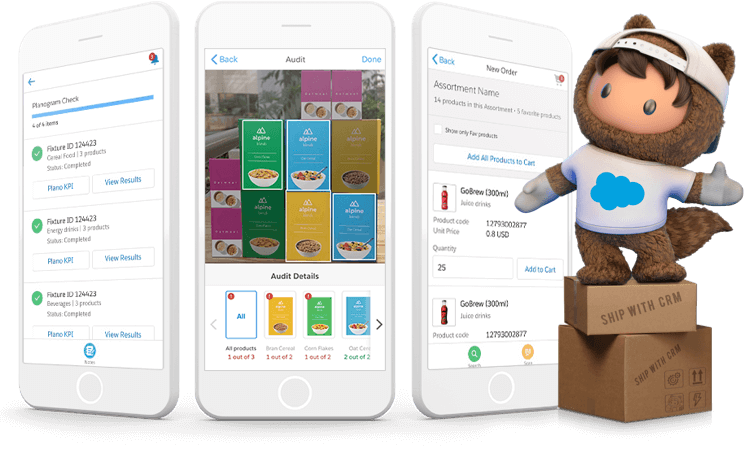Consumer Goods and the Great B2B Digital Acceleration
What 500 consumer goods leaders have to say about digital transformation in the B2B route to market.
When the world came to a halt in 2020, a massive wave of digital adoption allowed consumer goods (CG) companies to merchandise and sell products directly to consumers as they flocked online to purchase the essential goods they needed. But digital adoption in the consumer goods industry didn’t just impact the business-to-consumer (B2C) space — it also affected the vast business-to-business (B2B) ecosystem of manufacturers, distributors, and wholesalers that work together to get essential goods to your local storefronts.
Organisations acted quickly to adapt to these new market conditions. In our survey, nearly all (99%) CG companies accelerated digital transformation in their B2B route to market.

99% of CG companies accelerated digital transformation in the B2B route to market.
- Digital acceleration drives industry-wide B2B maturity
- Digital investments streamline account management
- Retail and field execution goes virtual
- Investments in B2B digital commerce heat up
- Key Account Management
- Retail and Field Execution
- B2B Digital Commerce
Digital acceleration drives industry-wide B2B maturity
How many years of B2B digital transformation did you accelerate in 2020?

Respondents say that without the digital investments made in 2020, they would have been less successful during the pandemic.

What impact did digital transformation have in 2020?


Discover Salesforce Customer 360
Learn how to unite your whole company around your customers.

RESEARCH AND REPORT
European Grocery Report

Guide
COVID-19 Response Playbook

Telesales
Digital customer service
Telesales and digital customer service

Trade promotion management
Industry-wide increase in trade promotion spend


Flexibility, transparency, and responsiveness of the retail distribution network was critical in getting valuable merchandise to stores in the face of erratic demand. Field representatives still made in-person store visits, but they did so at a greatly reduced pace as CG companies worked to keep frontline workers safe. At the same time, retailers minimised unnecessary in-person contact to protect shoppers so field reps had limited time in-store for merchandising.
To maintain engagement from afar, CG companies introduced remote store visits. Field reps checked shelf-compliance and conducted merchandising activities remotely, while retailers were able to interact directly with reps to get what they needed to support shoppers.
Now, CG companies are embracing remote work for the long term and pivoting away from traditional field operations. Forty-four percent of CG leaders are looking to adopt more remote-based retail and field execution technologies in the next 3–5 years.
This includes real-time shelf-monitoring (40%), the Internet of Things (IoT) for merchandising audits (39%), and object and facial detection (37%) to support tasks like shelf audits and planogram compliance.
CG companies looking to adopt the following in 3–5 years


The rise of self-service b2b digital commerce
Eighty percent of all B2B organisations are moving or have moved to digital commerce. In looking closer at the CG industry, nearly half (48%) of respondents implemented self-service B2B digital commerce solutions in 2020.
Companies with revenue of $1B or more adopted self-service tools at an even greater rate (52%) than those with revenue of less than $1B (48%). A cohort of this size likely has electronic ordering in place through an electronic data interchange (EDI), but the increased investment in B2B commerce could indicate that even large businesses are modernising with self-service channels versus traditional EDI processes.
B2b digital marketing takes priority
B2b marketing

Conclusion: What’s next in consumer goods?
More Resources

Blog
Going Direct-to-Consumer, the KIND Way

Report
State of Commerce

Webinar
How leading CG brands are building better customer relationships
